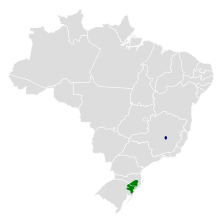
The stripe-breasted spinetail is a passerine bird in the Furnariinae subfamily of the ovenbird family Furnariidae. It is found in Colombia, Trinidad, Tobago, and Venezuela.
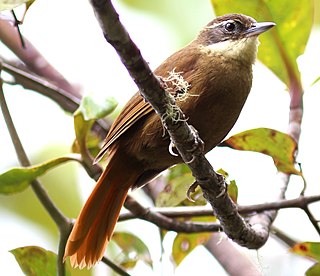
The tepui foliage-gleaner, also known as the white-throated foliage-gleaner, is a species of bird in the Furnariinae subfamily of the ovenbird family Furnariidae. It is found in Brazil, Guyana and Venezuela.
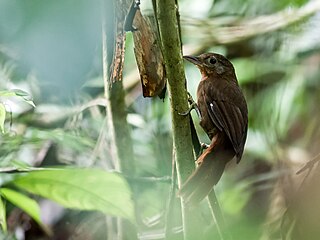
The ruddy foliage-gleaner is a species of bird in the Furnariinae subfamily of the ovenbird family Furnariidae. Its range is highly disjunct, with populations in Mexico, several Central American countries, and in every mainland South American country except Argentina, Chile, Paraguay, and Uruguay.

The chestnut-crowned foliage-gleaner is a species of bird in the Furnariinae subfamily of the ovenbird family Furnariidae. It is found in Bolivia, Brazil, Colombia, Ecuador, French Guiana, Guyana, Peru, Suriname, and Venezuela.

The Cordoba cinclodes or Comechingones cinclodes is a species of bird in the Furnariinae subfamily of the ovenbird family Furnariidae. It is endemic to Argentina.

The buff-winged cinclodes is a species of bird in the Furnariinae subfamily of the ovenbird family Furnariidae. It is found in Argentina, Brazil, Chile, Paraguay, Uruguay and as a vagrant on the Falkland Islands.
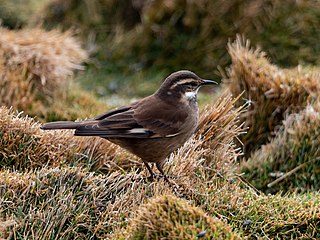
Olrog's cinclodes is a species of bird in the Furnariinae subfamily of the ovenbird family Furnariidae. It is endemic to Argentina.

The grey-flanked cinclodes, formerly known as Oustalet's cinclodes, is a species of bird in the Furnariinae subfamily of the ovenbird family Furnariidae. It is found in Argentina and Chile.
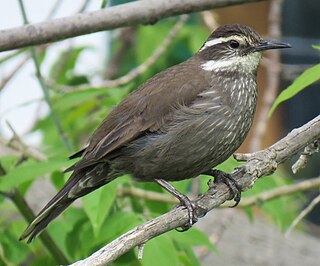
The dark-bellied cinclodes is a species of bird in the Furnariinae subfamily of the ovenbird family Furnariidae. It is found in Argentina and Chile.

The Peruvian seaside cinclodes or surf cinclodes is a species of bird in the Furnariinae subfamily of the ovenbird family Furnariidae. It is endemic to Peru.

The stripe-crowned spinetail is a species of bird in the Furnariinae subfamily of the ovenbird family Furnariidae. It is found in Argentina, Bolivia, Brazil, Paraguay, and Uruguay.

The spot-throated woodcreeper is a species of bird in subfamily Dendrocolaptinae of the ovenbird family Furnariidae. It is found in Brazil, Colombia, Ecuador, French Guiana, Guyana, Peru, Venezuela, and possibly Suriname.

The bar-bellied woodcreeper is a species of bird in the subfamily Dendrocolaptinae of the ovenbird family Furnariidae. It is found in Bolivia, Brazil, Colombia, Ecuador, and Peru.

The Itatiaia spinetail, also known as the Itatiaia thistletail, is a species of bird in the Furnariinae subfamily of the ovenbird family Furnariidae. It is endemic to southeastern Brazil.

The planalto foliage-gleaner, also known as the russet-mantled foliage-gleaner, is a species of bird in the Furnariinae subfamily of the ovenbird family Furnariidae. It is found in Brazil and Paraguay.

The chestnut-winged foliage-gleaner is a species of bird in the Furnariinae subfamily of the ovenbird family Furnariidae. It is found in Bolivia, Brazil, Colombia, Ecuador, Peru, and Venezuela.

The rufous-tailed foliage-gleaner is a species of bird in the Furnariinae subfamily of the ovenbird family Furnariidae. It is found in Bolivia, Brazil, Colombia, Ecuador, Guyana, Peru, Suriname, Venezuela, and possibly French Guiana.

The chestnut-throated spinetail is a species of bird in the Furnariinae subfamily of the ovenbird family Furnariidae. It is mainly found in Bolivia, Brazil, Colombia, Ecuador, and Peru.

The ochre-cheeked spinetail is a species of bird in the Furnariinae subfamily of the ovenbird family Furnariidae. It is found in Argentina, Bolivia, Brazil, Paraguay, and Peru.

The cream-winged cinclodes is a species of bird in the Furnariinae subfamily of the ovenbird family Furnariidae. It is found in Argentina, Bolivia, Chile, and Peru.

